Tour world premiere for Sennheiser EW-DX
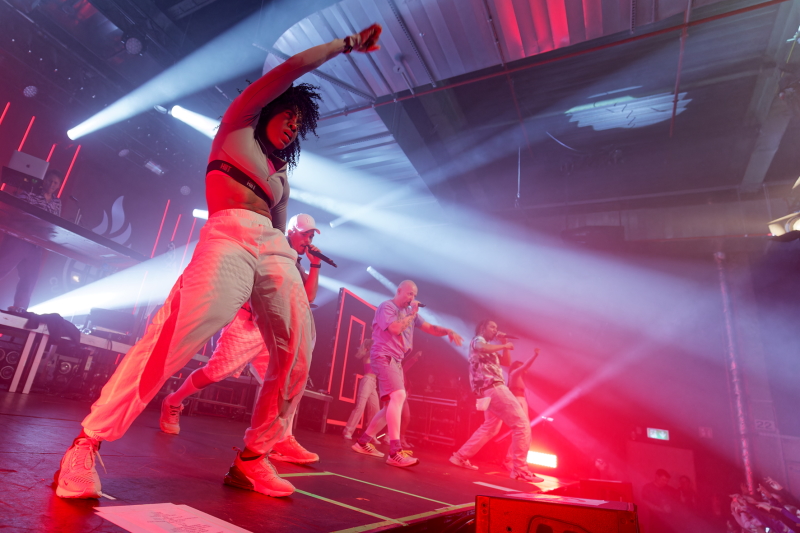
20 years of Culcha Candela! The band celebrated this anniversary in March 2023 with an extensive tour of Germany. During the shows, Sennheiser EW-DX wireless systems not only help to provide powerful sound, they ensure the witty song lyrics are clearly understood and give the multi-cultural Berlin band exceptional freedom of movement on stage for their high-energy, full-throttle performances.
On its “Too True to be Beautiful” tour, Culcha Candela’s four-piece core band share the stage with two backing vocalists, a percussionist and several dancers. Almost all the vocals are picked up by Sennheiser EW-DX SKM handheld transmitters fitted with MMD 945 dynamic microphone heads (super-cardioid), the only exception being percussionist Michael Escuriola, who uses a Sennheiser HSP 4 neckband mic and an EW-DX SK bodypack transmitter. In addition to the six EW-DX SKM, there is also a handheld transmitter for guests as well as a spare.
Culcha Candela’s equipment includes five space-saving 9.5” EW-DX EM two-channel UHF receivers in the R1-9 frequency range (520 - 608 MHz). Their analogue outputs are connected with an audio splitter to ensure the FOH and monitoring consoles are able to access the microphone signals independently of one another. Two Sennheiser EW-D ASA splitters – cascaded to produce an eight-channel splitter – are connected to ADP-UHF passive directional antennas (470 – 1050 MHz), so that eight channels can be received via the two antennas.
The special features of the new Sennheiser EW-DX series include “Intelligent Switching Diversity”, which enables antennas to be switched between audio frames – a process that guarantees stable transmission without audible artefacts. Latency, which is always a factor in digital systems, is a mere 1.9 milliseconds, making it imperceptible in practical application. In EW-DX systems, the innovative “Sennheiser Performance Audio Codec” (SePac) ensures excellent audio transparency from the capsule input to the system output. A switching bandwidth of up to 88 MHz enables the transmission of up to 146 channels in standard mode and up to 293 channels in Link Density mode.
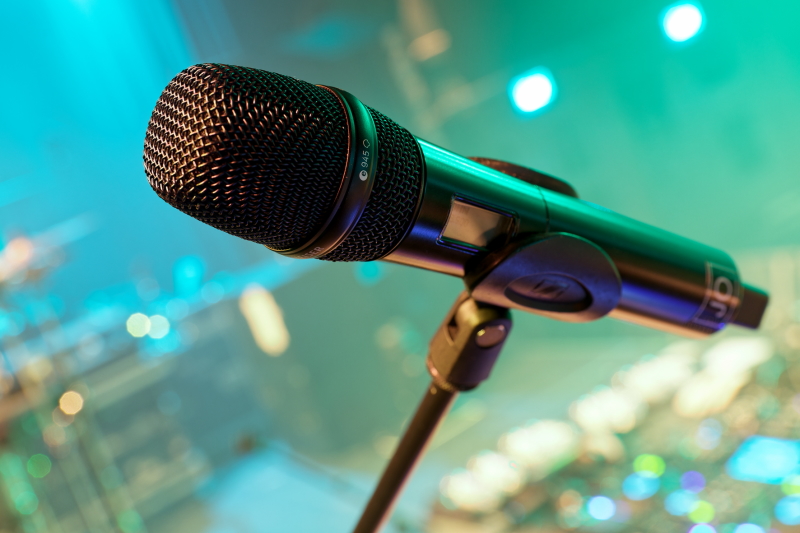
“We are the first tour production to go on the road with the brand-new Sennheiser EW-DX systems,” reports monitor mixer Yannick Spohr at a tour stop in Cologne, who has been working with Culcha Candela in various roles for some time. “I’m absolutely thrilled by our new Sennheiser systems. For example, when dealing with frequency management, one thing that really impressed me is that your hand doesn’t “seize up” during the sync process. With the EW-DX system, synchronisation is really relaxed and is carried out using Bluetooth, which works without any problems at all even at some distance across the stage.”
Spohr is also highly positive about the innovative battery technology of the new EW-DX systems: “At the moment, there aren’t any matching LM 6070 modules for the L 6000 19” charging station, which is why we are using L 70 USB charging units for the time being,” Spohr explains. “It’s fantastic that the batteries have a life of 11 to 12 hours and I can absolutely rely on the display for the remaining battery life shown in hours and minutes – no comparison with a bar display that is much less accurate. During the show, I always keep an eye on the Wireless Systems Manager. The Sennheiser software continuously shows all relevant parameters, and I don’t have to keep bending down to look into the rack.”
For many years now, Culcha Candela have been using in-ear systems from Sennheiser’s 2000 series, and even though they have been in operation in countless concerts, they still do their job perfectly. The systems used are EK 2000 IEM, which communicate in the AW+ band (470 – 558 MHz) with four SR 2000 IEM units. For the tour, an additional channel was hired for the percussionist. An A 5000-CP passive antenna with circular polarisation connected to an AC 3000 Active Transmitter Combiner completely covers the large performance area of the stage. Sennheiser shotgun microphones at the front edge of the stage pick up the audience’s reactions to the exciting stage show.
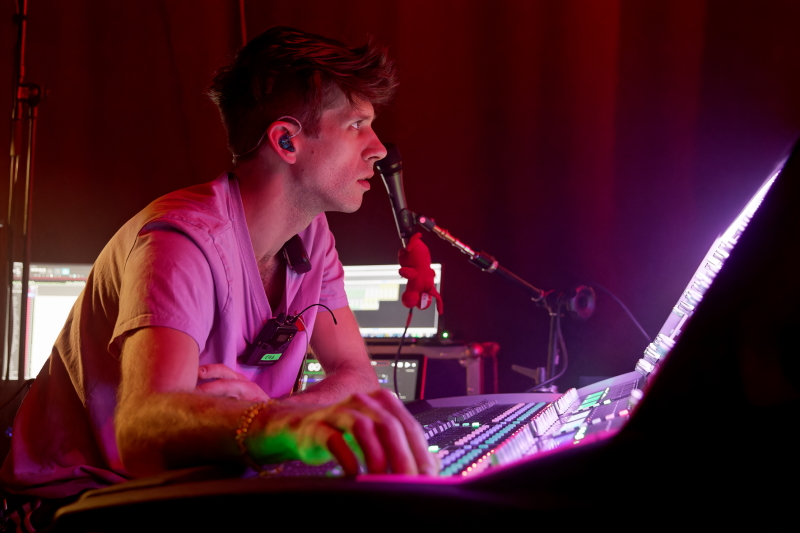
Yannick Spohr
Spohr is also highly impressed by the stability of the reception, which for him is one of the many convincing features of the new EW-DX systems: “Even in critical RF environments, there are no problems at all with interference or audible dropouts. But we have to make sure that the carrier frequencies are set at a reasonable distance from one another. For the interconnected system, the WSM software, just like in Sennheiser high-end Digital 6000 and Digital 9000 systems, calculates an equidistant grid that works reliably without intermodulation. I’m very familiar with the WSM software, but I haven’t yet tried the Sennheiser Smart Assist App or Control Cockpit.”
Spohr confirms that the vocalists and rappers on stage are absolutely delighted with the new digital EW-DX products, especially because they can now wrap their hands around the antennas of the handheld transmitters during their dance moves with no risk of the connection being interrupted. According to Spohr, this is even the case if large LED walls are being used on stage, for example at festival performances, which are known to occasionally cause problems for analogue wireless channels.
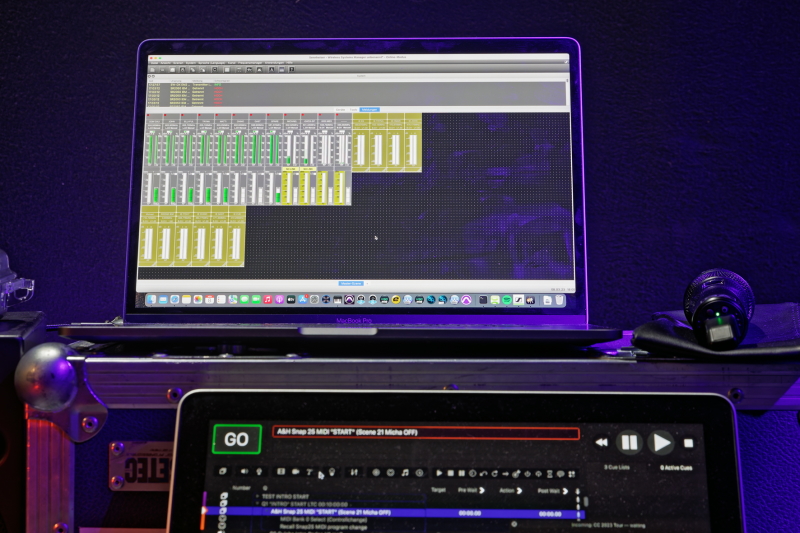
“I’m totally satisfied with the new EW-DX systems,” Spohr said after the sound check in Cologne. “And as far as the sound is concerned: absolutely solid! It’s really clear and very defined. And not only that: the handheld transmitters have already proven to be extremely robust on our current tour. As you know, the band’s dance moves can be a bit wild and sometimes one of the vocalists drops a mic on the floor. When that happens, the noise is not very nice, but the tough metal housing ensures that the show can go on without any problems.”
The man responsible for Culcha Candela’s FOH sound during the “Too True to be Beautiful” tour is Sven Geiger, who is widely known in the industry by his nickname “Samson”. Geiger belongs to a select group of sound engineers who regularly work both in the studio and at live concerts.
Sven Geiger has a soft spot for analogue audio technology, and in his own studio he has a collection of reel-to-reel tape recorders (multitrack, ¼-inch, ½-inch) which can be used to play both historical and current recordings before they are digitised using high-end A/D converters. “It’s still quite common for progressive rock bands today to master their recordings on tape and then later use the tape as the starting material for the vinyl cut,” he says.
“On the “Too True to be Beautiful” tour, FOH mixing is certainly not a trivial matter, even if various stems for Culcha Candela come from a hard disk. The band put everything they’ve got into their shows and my job is not only to make sure the audience can enjoy a powerful sound when they are dancing, I also want them to understand the lyrics of the songs without difficulty and without letting the music fade into the background.”
According to Geiger, the new Sennheiser EW-DX systems have certainly had a very positive impact on the sound: “EW-DX is a quantum leap forward in quality compared to the former analogue systems, and the vocals come through even better now. The sound overall seems cleaner and clearer. By the way, you can also notice this on the recordings of the shows when you listen in to the individual tracks later.”
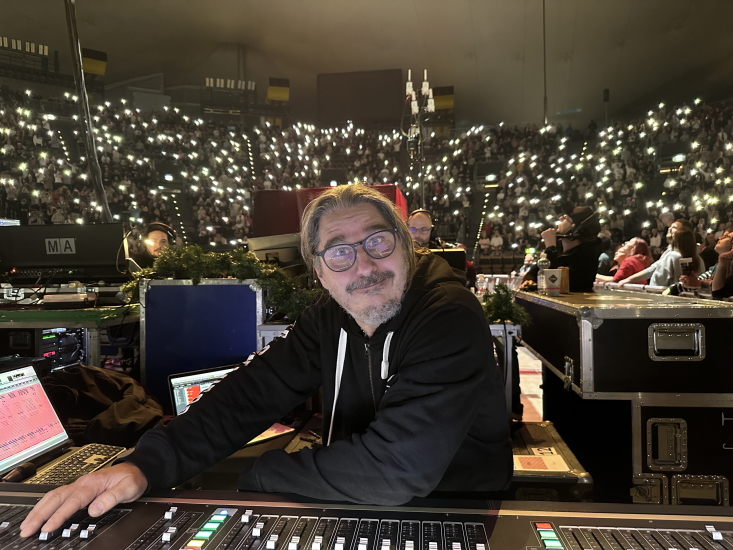
Sven Geiger. Picture: Thomas Berkermann
Geiger uses external analogue preamps and analogue compressors to pre-amplify and process the vocals signals, and this helps deal with the enormous dynamic range of the singers and rappers. After analogue processing, the audio signals are digitised at the mixing console with an acceptable headroom.
With their extremely danceable mix of hip hop, reggae and Latin sounds, as well as their socially committed attitude and consistently positive vibes, Culcha Candela have been inspiring a huge fan base for two decades. The hits by Mateo, DJ Chino, Don Cali and Johnny Strange are all veritable club bangers, but they work just as well on the radio. More than five million records sold, over 30 gold and platinum awards and around 1,500 live shows are evidence of the success of this multi-ethnic band. The tour birthday party in March featured some new material, but of course the set list also included classic hits such as “Hamma!”, “Berlin City Girl” and “Monsta”. The shows could best be summed up as “pure party”.
In Cologne, Candela vocalist Mateo Jasik commented on the new Sennheiser EW-DX systems: “I can still remember the first time we performed with professional equipment. For us, it was a real quantum leap forward when we no longer had to go on stage with wired mics and wedges, but could rely on wireless channels and wireless in-ear solutions from Sennheiser. With the new EW-DX systems, I can’t hear any noise interference in my in-ear headphones, and so far on the tour I haven’t noticed a single dropout. The sound of EW-DX is ace, absolutely wicked!”
“We all know that the pop business is fast-moving and bands come and go, so I’m always really happy to see German acts who are still successful many years after their breakthrough, who are filling huge venues with their concerts, and who are also reaching a lot of very young people alongside their established fan base,” said Thomas Holz, Sennheiser Relations Manager, after seeing the concert in Cologne. “Culcha Candela have always relied on professional wireless systems from Sennheiser, and, together with us and the new EW-DX systems, they are taking the logical step into the digital future.”
Culcha Candela’s “Too True to be Beautiful” tour continues in summer 2023 with a number of open-air shows.
 How to resolve AdBlock issue?
How to resolve AdBlock issue?